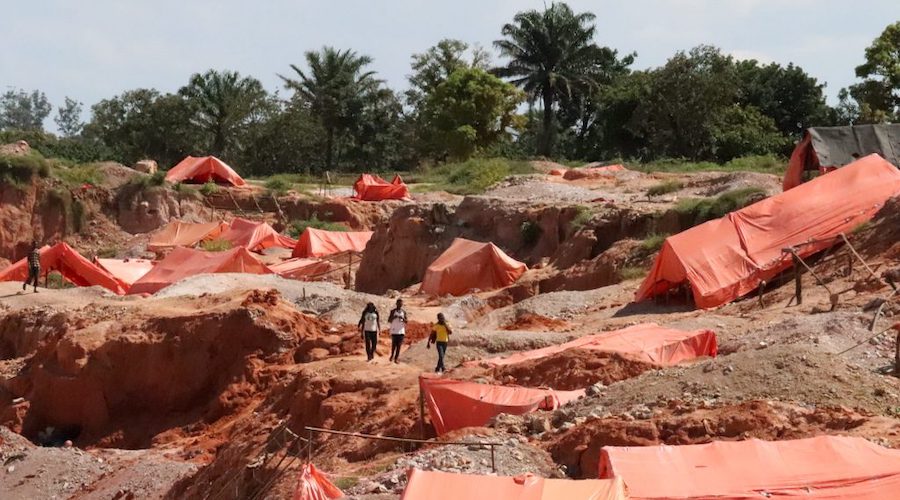Exploring biggest maintenance challenges in the mining industry
By Bryan Christiansen
The mining industry is by nature a highly complex sector. Its processes and operations are intensive, risk-prone, and subject to uncontrollable weather conditions. On top of that, it’s an industry surviving on finite resources – anything from precious stones to carbon-based fuels. As expected with the exploration of any exhaustible resource, product decline will come. In fact, the mining sector is already grappling with this reality globally.
The mining industry poses another unique challenge. Its personnel operate complex equipment, comparable in size to a medium-sized building, in some climatically hostile and extreme environments. With this mixture, mine maintenance is no easy venture. The typical mine maintenance manager will have to grapple with many issues including continuous machine repair, aging equipment, reduced funds, and safety concerns.
Below are 3 of the most pressing maintenance challenges in the mining industry and possible solutions to alleviate them.
3 Biggest Mining Maintenance Challenges and Possible Solutions
1) Equipment Maintenance
Mining equipment maintenance is so vital that a single mining venture could spend from 35% to 50% of its annual operating budget on equipment maintenance and repair alone. Such equipment includes borers, drills, excavators, loaders, diggers, and much more. It is expected that a mine maintenance unit would usually have some sort of preventive maintenance strategy in place. However, these machines undergo so much stress and strain that they regularly break down. When such failures occur, depending on the severity of the fault and complexity of the asset, productivity will reduce or stop entirely till repairers can be moved to the site.
After factoring in the cost of transporting these specialist repair technicians – usually by air – to the often far-flung locations where mines operate, it’s clear that maintenance requires an even more proactive approach than the normal routine/preventive maintenance.
Fortunately, the mining industry is no stranger to advancements in digital technology and mining ventures are now adopting the practice of embedding sensors in physical assets. These sensors are internet-enabled and with the current state of IoT, they can capture considerable volumes of data, analyze it, and communicate with other machines. These sensors greatly improve the anticipation of failures by generating alerts when a potential problem is noticed.
Deploying such technology in maintenance beats the traditional schedule-based strategy and can significantly reduce maintenance costs.
2) Safety of Personnel and Equipment
Safety remains a critical issue in this industry as working in mines can be dangerous. Injuries and fatalities among mine workers continue to generate international concern and the NIOSH reports that in the US alone, there were 26 mining-related fatalities in 2015. Other reports indicate that up to 30% of injuries and fatalities that occur during mining operations are equipment maintenance related. This figure could be much higher in other countries worldwide.
To protect workers and drive the above statistics down, mine maintenance managers can explore the following:
- Regular training and re-training should be mandatory and essential for machine operators and repairers regardless of how much experience those technicians have. This is comparable to the manufacturing industry where safety training takes the lead in front of any other type of personnel training. Accidents can often occur around machines when workers assume it’s a routine and this can lead to complacency. They should be trained to watch out for warning signs like unusual vibration, excessive heat, rattling, and noise when operating this large and complex equipment.
- Smart safety wear is another investment mine maintenance managers should consider. For instance, while repairing a piece of equipment, technicians can wear smart goggles that give step-by-step instructions on the task at hand. There is also smart clothing that to track the exact location of technicians helps supervisors at a remote location and can transmit information regarding the technicians’ physical condition and detect any hazardous changes in the enclosure or immediate surroundings.
- Ensure machines are purchased from reputable manufacturers that are recognized for safe and durable products that are as easy to maintain as possible.
- Mine decision makers as a whole could also explore areas of artificial intelligence that now allow many of the more dangerous aspects of resource extraction to be automated. For instance, by using robots and remote-controlled vehicles, mines can eliminate many instances of human error that lead to accidents.
3) Controlling Costs
The decline in availability of untapped high-quality ore deposit is a major challenge facing the mining industry today. The immediate result of this is a reduction in ore quality and miners having to go deeper beneath the land. This report from the World Economic Forum in 2017 states that over a period of 15 years, the average cost of producing copper has increased by over 300% but grade has dropped by 30%.
As a result of this deterioration in quality, mining companies must contend with lowered productivity and lower commodity prices and profits but still pay heavy taxes and permits. With profits down, mine maintenance heads need innovative ways to keep production running with fewer funds.
One way to achieve this is by studying other industries that have successfully adopted lean techniques and process automation without necessarily jeopardizing quality and safety. Modern manufacturing companies, for instance, can offer some ideas in this regard. In addition, they could explore areas to minimize operational inefficiency whether in energy consumption, workforce engagement, by reusing materials and resources, etc.
Despite the fact that mining is a peculiar industry with unique demands, the sector can still benefit tremendously from many technological innovations like the smart safety wear, and many other tools that the IoT is churning out almost daily.
Mine maintenance managers will need to recognize these trends and quickly recommend and adopt them for the mines they help oversee. They need to own the change process and play an active role in it so as to keep company assets running while keeping costs down. Only then can they hope to gain a competitive edge.

Bryan Christiansen is the founder and CEO at Limble CMMS. Limble is a modern, easy to use mobile CMMS software that takes the stress and chaos out of maintenance by helping managers organize, automate, and streamline their maintenance operations.
More News
{{ commodity.name }}
{{ post.title }}
{{ post.date }}



Comments